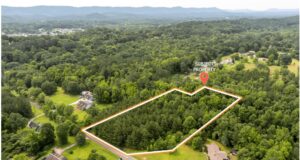EPA Kicks Off Campus RainWorks Challenge to Develop Innovative Approaches to Stormwater Management
WASHINGTON, D.C. – September 2, 2015 – (RealEstateRama) — The U.S. Environmental Protection Agency is launching its fourth annual Campus RainWorks Challenge for undergraduate and graduate students to design green infrastructure systems to reduce stormwater pollution and increase resiliency to climate change.
Student teams, working with a faculty advisor, will propose green infrastructure projects for their campuses, demonstrating how managing stormwater at its source can benefit communities and the environment.
Registration for the 2015 Challenge opens Sept. 1 and ends Sept. 30. Registrants must submit their entries by Dec. 18, and winners will be announced on Earth Day, April 22, 2016.
Each first-place team will earn a student prize of $2,000 divided evenly among student team members and a faculty prize of $3,000 to support green infrastructure research or training. Second-place teams will win $1,000 for student teams and $2,000 for faculty research.
Since 2012, more than 350 student teams have participated in the challenge. The competition raises awareness of green infrastructure on college campuses, trains the next generation of professionals on green infrastructure principles, and fosters interdisciplinary collaboration.
Stormwater is one of the nation’s most significant water quality challenges. Large volumes of stormwater pollute our nation’s streams, rivers and lakes, posing a threat to human health and the environment and contributing to downstream flooding.
Green infrastructure:
· Decreases pollution to local waterways by treating rain where it falls and keeping polluted stormwater from entering sewer systems.
· Increases economic activity, neighborhood revitalization, job creation, and open space.
· Builds resiliency to the impacts of climate change by reducing the burden on local water infrastructure, managing local flooding, reducing urban heat islands, and lowering energy demands.
Green infrastructure practices include green roofs, permeable materials, alternative designs for streets and buildings, trees, rain gardens and rain-harvesting systems. Communities are increasingly using green infrastructure to supplement or substitute for “gray” infrastructure such as pipes, filters and ponds.
More information is available at www.epa.gov/campusrainworks.
Contact Information: Robert Daguillard, , (202) 564-6618

















